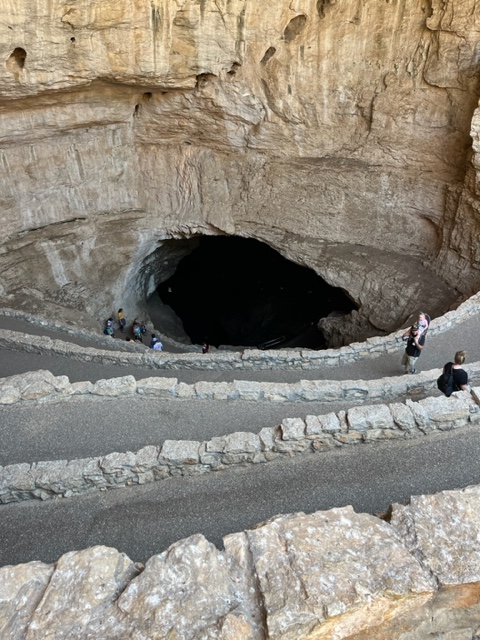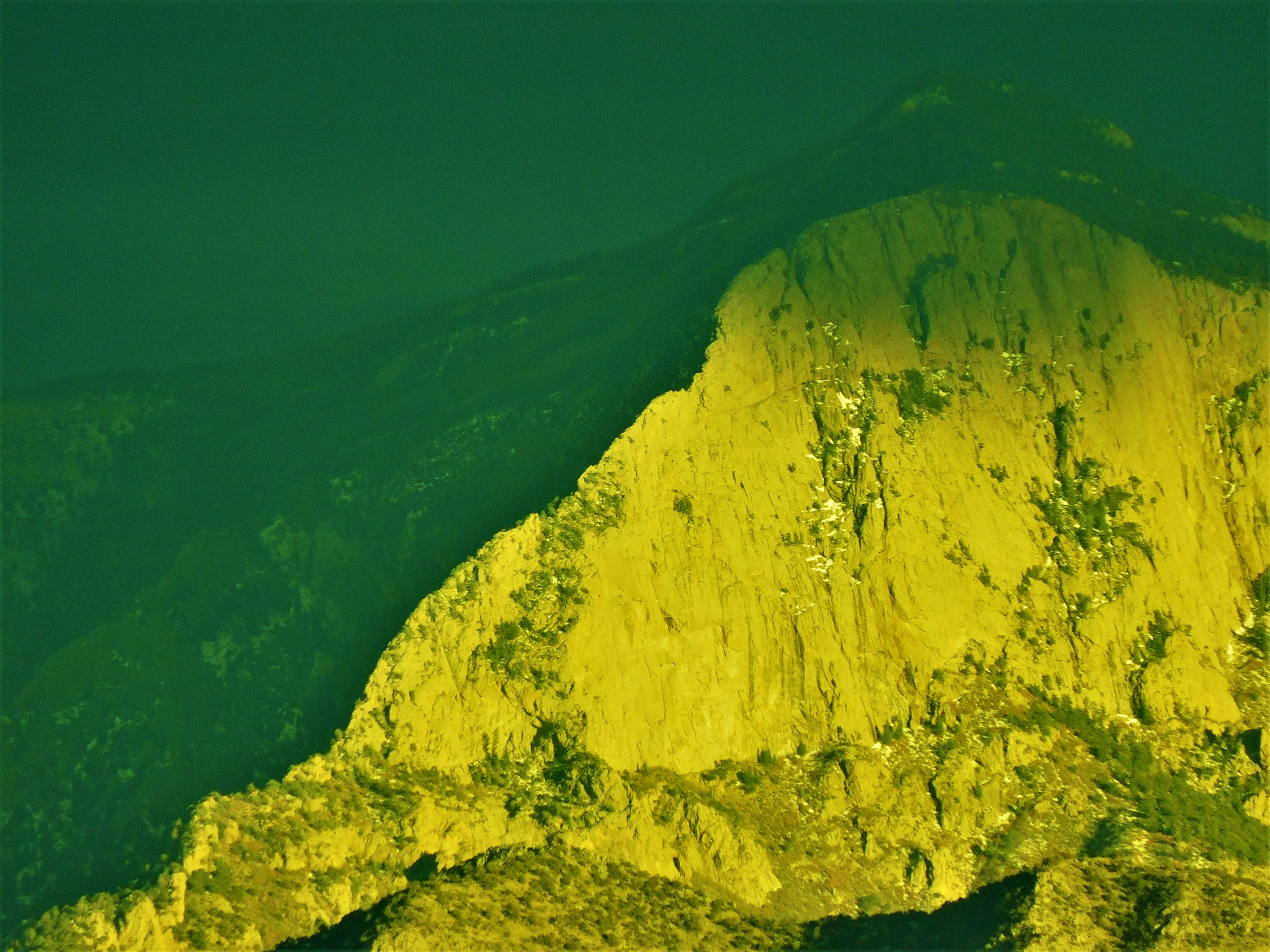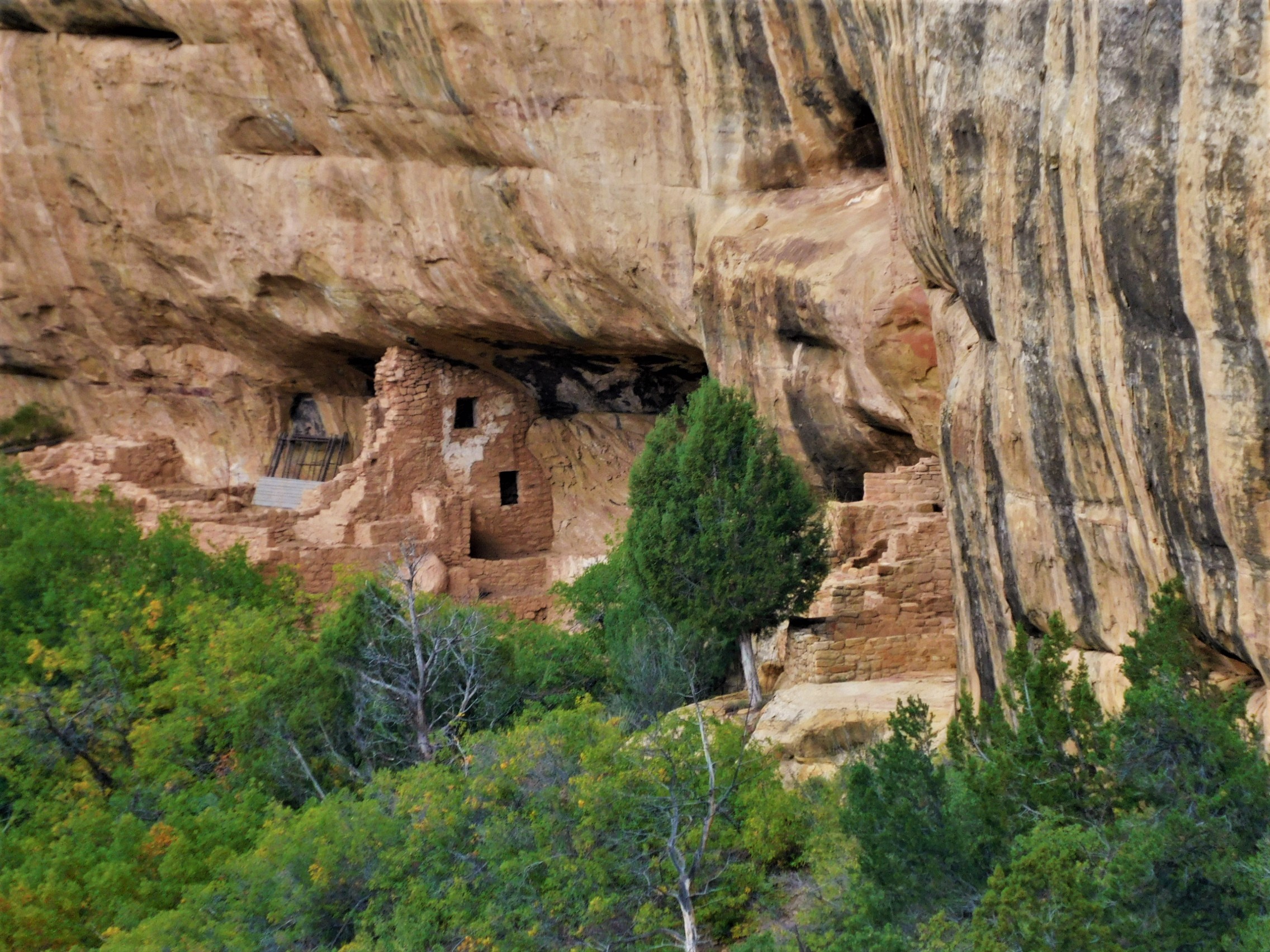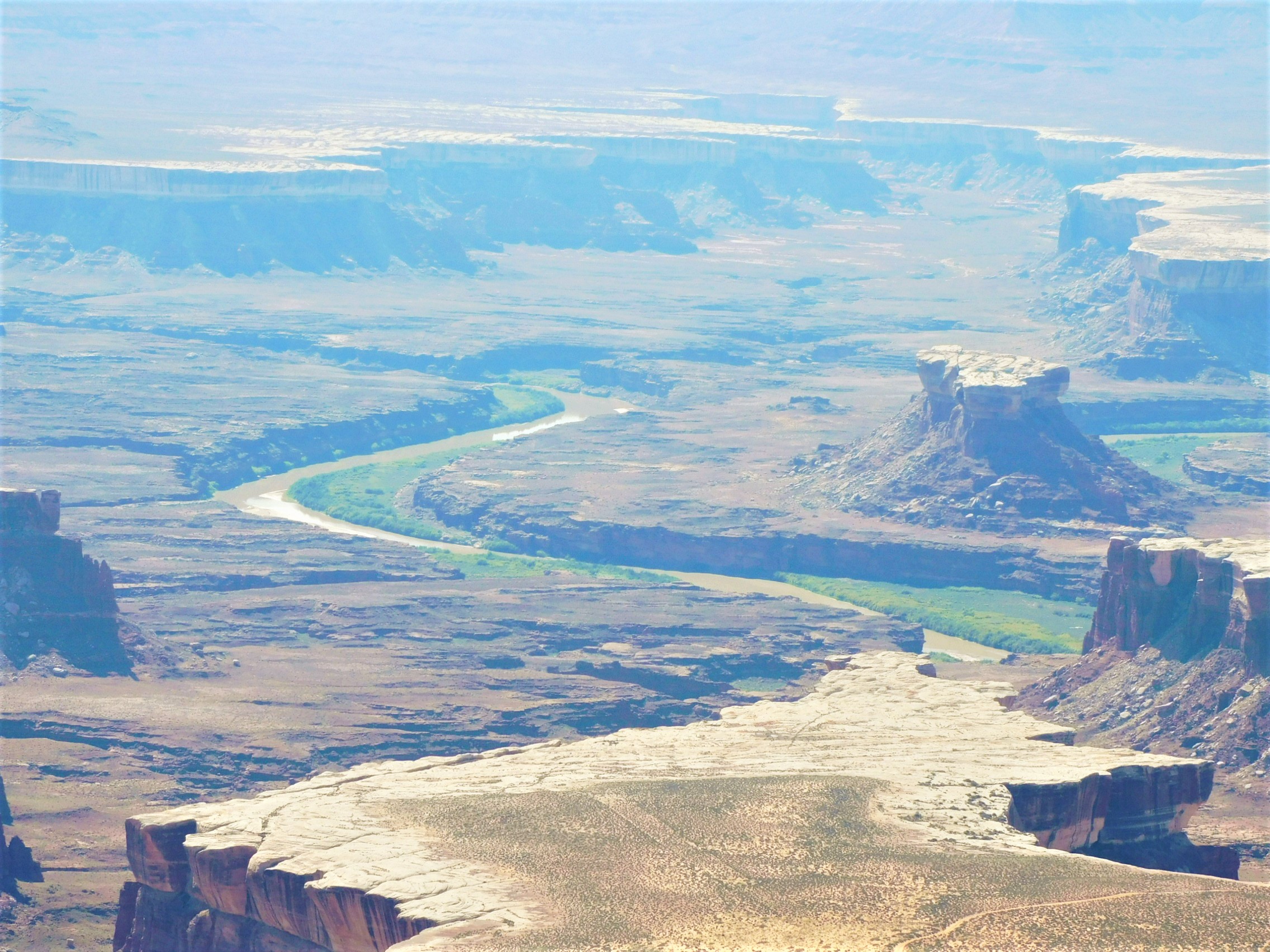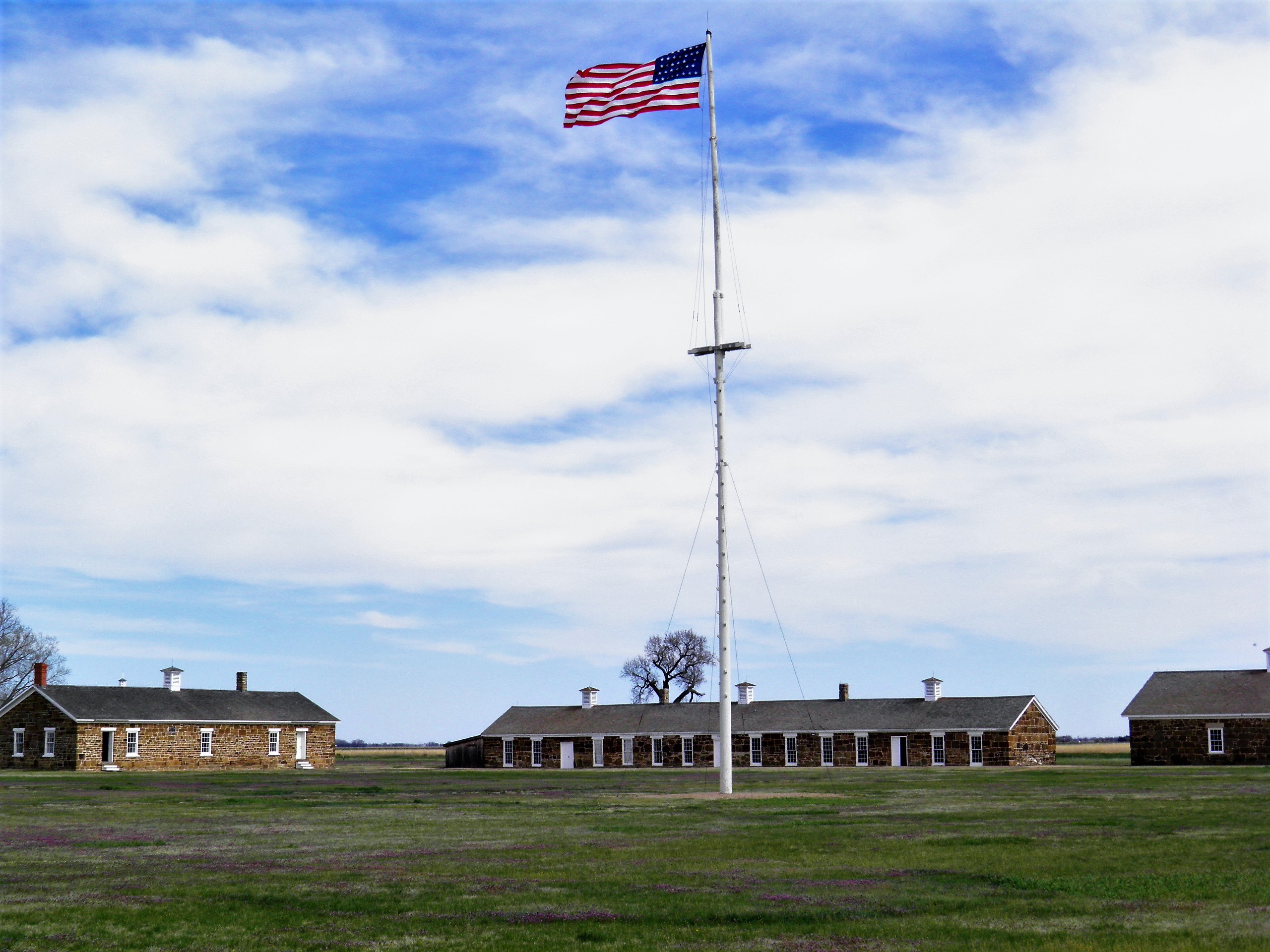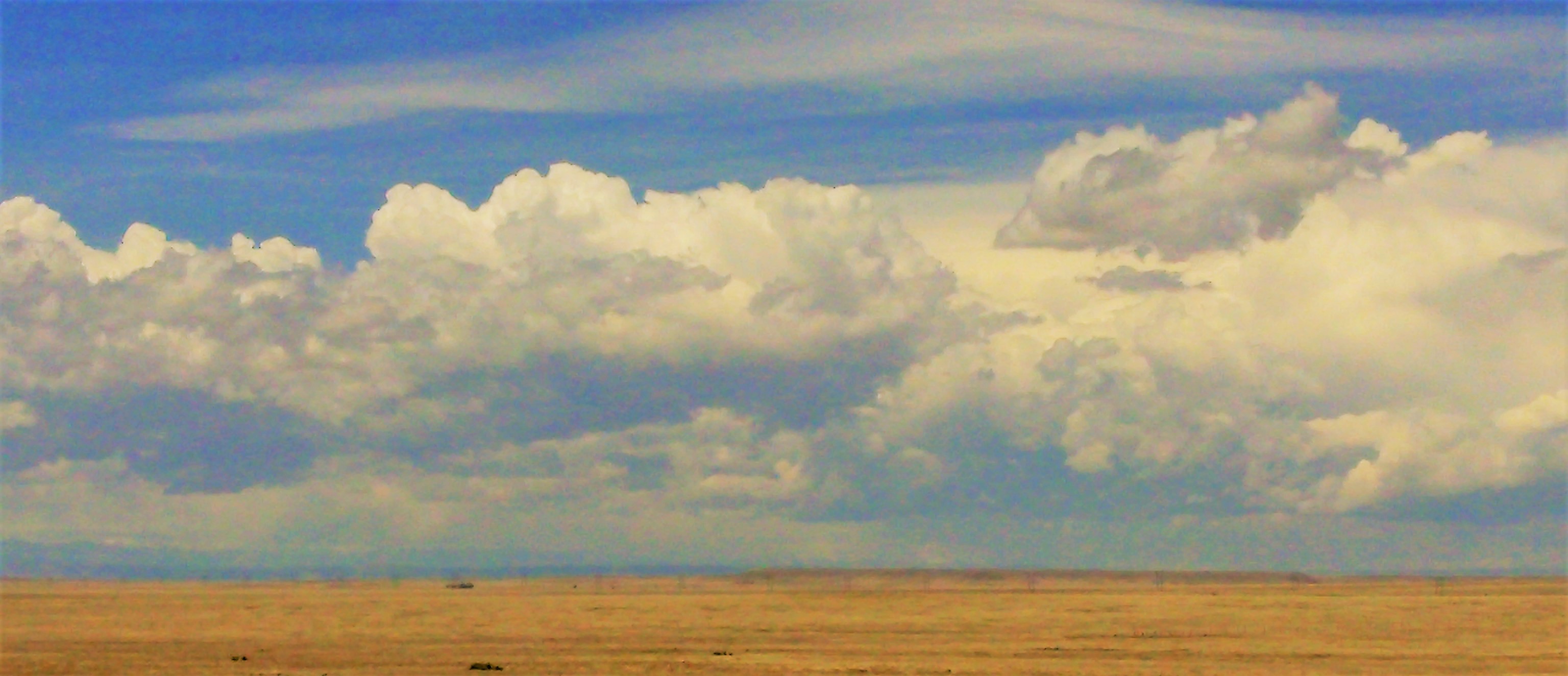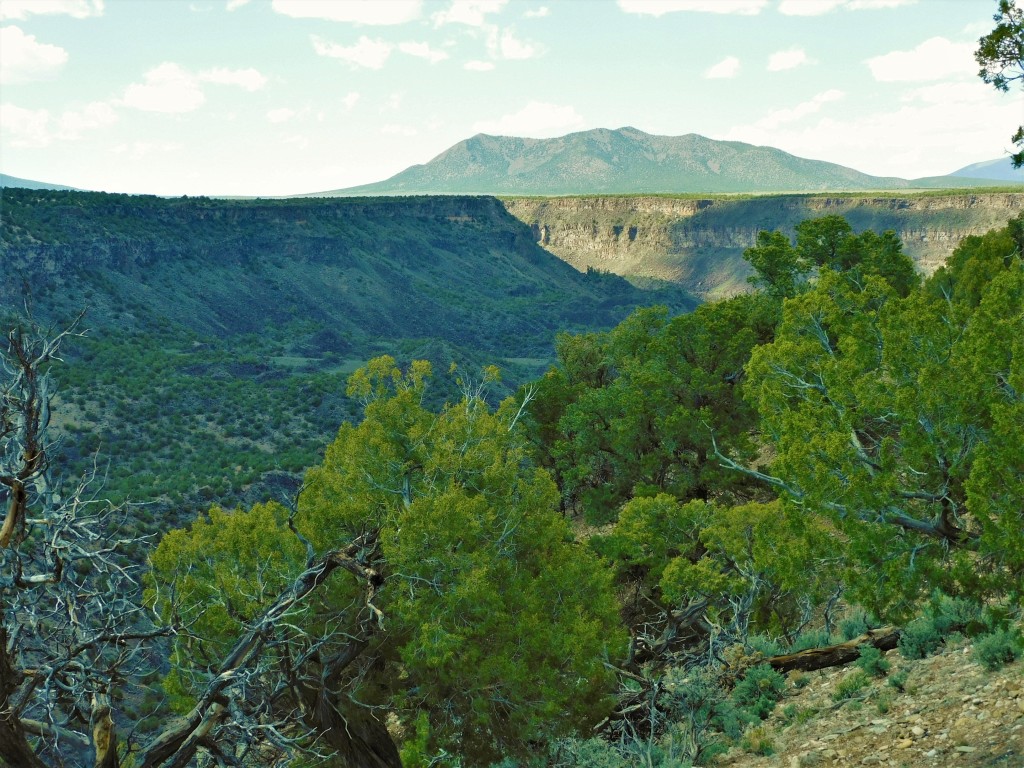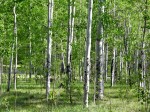
Oklahoma
America seems more and more to be slipping out of its once vibrant palette into a black and white existence. There seems to be very few gray areas left and not much color. We have somehow lost our ability to see where one thing fades into another. The nuances of opinion or the appreciation of compromise is lost. The “all or nothing” perspective seems to be winning out as long as “we” get all and “you” get nothing. I have my own opinions and observations, which I sometimes share on another blog.
This thought occurred to me on my spring road trip cross-country back to my old hometown of St. Louis for a family wedding. That’s about 2,500 miles, roundtrip, and half of it was with my adult daughter who arrived in St. Louis by a long and round-about train trip and accompanied me on the homeward leg of the trip. I traveled through New Mexico, Oklahoma, Kansas, and Missouri and we also passed through the Texas Panhandle on our way home. That is a lot of pavement and time to think and talk. Her Amtrak trip took her through Arizona, California, Oregon, Washington, Idaho, Montana, North Dakota, Minnesota, Wisconsin, and Illinois. Together, we covered fifteen states and talked to people along the way. One thing that sometimes happens in casual conversation is that the other person assumes you are of the same mind as they are on some topics. Perhaps they do not recognize that there can be a different and valid opinion. Some of those conversations included a pair of neo-Nazis, a clergyman, a well-loved old boss and mentor, a volunteer at a immigrant naturalization class, friends and family members. Most often our opinions coincided but certainly not always. Sometimes we just listened to conversations without joining in.
I won’t dwell on this observation of a national trend toward a limited and monochrome cultural and philosophical existence, but it inspired me to look at some of my trip images in black and white. I’m not much of a monochrome photographer so this is mostly an experiment. I’ll offer some explanations as we go along. This is just one view, not intended to be comprehensive.

An odd juxtaposition of categories and somewhat ironic. Is that a commentary? Book store in St. Louis (Left Bank Books).

Las Vegas, NM. The Hotel Castaneda (1898) was the first railroad Harvey House Hotel. Largely vacant and neglected for half a century, it is now restored and back in business thanks to the efforts of an enterprising local restoration advocate. He actually operates three restored hotels now, two in Las Vegas. My room at the Castaneda was quiet and comfortable and well supplied with everything I needed. The bar and restaurant were nice and friendly.

Restoration of one structure often ripples through the neighborhood. The Rawlings Building served as the rooming house for the crew of Harvey Girls that worked in the Hotel Castaneda, across the street. The restoration and preservation seeds found fertile soil and are well rooted in Las Vegas. There are over 900 structures on the historic register. The town is a magnet for movie filming locations.

Western Kansas — the high plains. One can be absolutely alone out on the western blacktop highways. I was essentially following the old Santa Fe Trail, now 200 years old.

Ellinwood, Kansas is a wide spot in the road halfway across the state with around 2000 residents. It was settled in 1872 along the Santa Fe Railroad. This was also on the route of the Santa Fe Trail and the area saw a lot of pioneer travelers heading west in the early days. I was surprised to see well preserved brick side streets in residential neighborhoods. The sound of a car driving on a brick pavement is mostly lost. Ellinwood has some notoriety as the birthplace of the 1970s “Kansas” rock group’s rise to fame (Dust in the Wind).

Ellinwood’s Wolf Hotel, opened in 1894, is on the historic register and serves as a hub of local activity. My rooms were just above the front door. There is a little enjoyable quirkiness to the place, thanks to the current owner.

Hell on the river. The massive Missouri State Penitentiary in Jefferson City was opened in 1836 and closed in 2004. It housed captured abolitionists, Confederate Civil War prisoners, “Pretty Boy” Floyd, “Sonny” Liston, Emma Goldman, “Kate” Richards O’Hare, and James Earl Ray, among many thousands of others.

The old prison administration building.
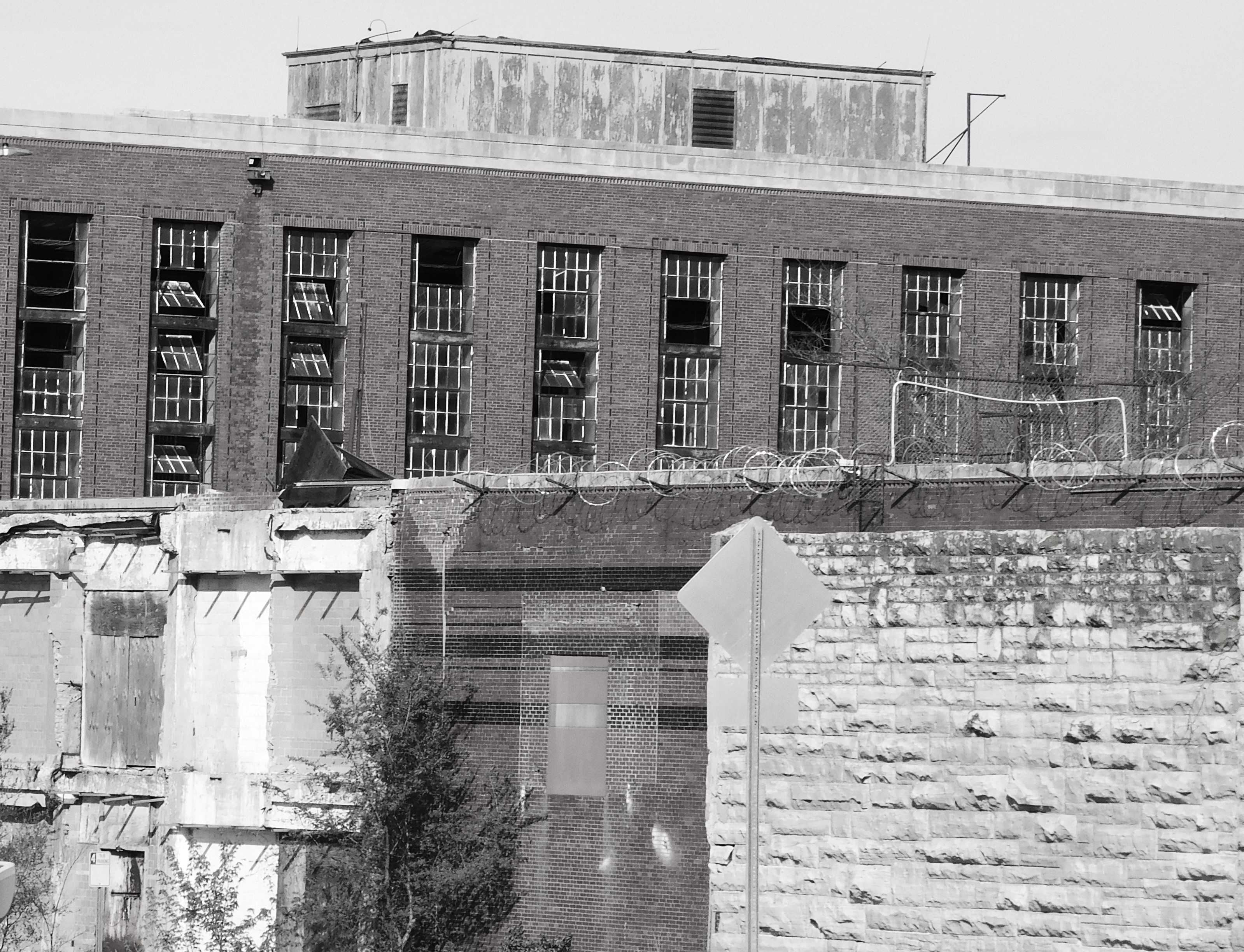
The complex is sitting idle but has become a popular tourist attraction. There are billboards on the interstate advertising prison tours. There are stories of ghosts in the prison, but I used to work in there on occasion and it was much scarier when filled with inmates. I understand that the gas chamber is a hit with the tourists. I find no joy in that. I still recall the sounds and the disinfectant smell of the place. The prison was built on a bluff over the Missouri River, hence the “Hell on the river” label.

The prison wall still stands along Lafayette Street but has now collapsed in a few other spots due to neglect. My office was in the stately brick “Director’s Residence” that served as the administrative offices in the 1980s. Guard towers were situated along the wall.
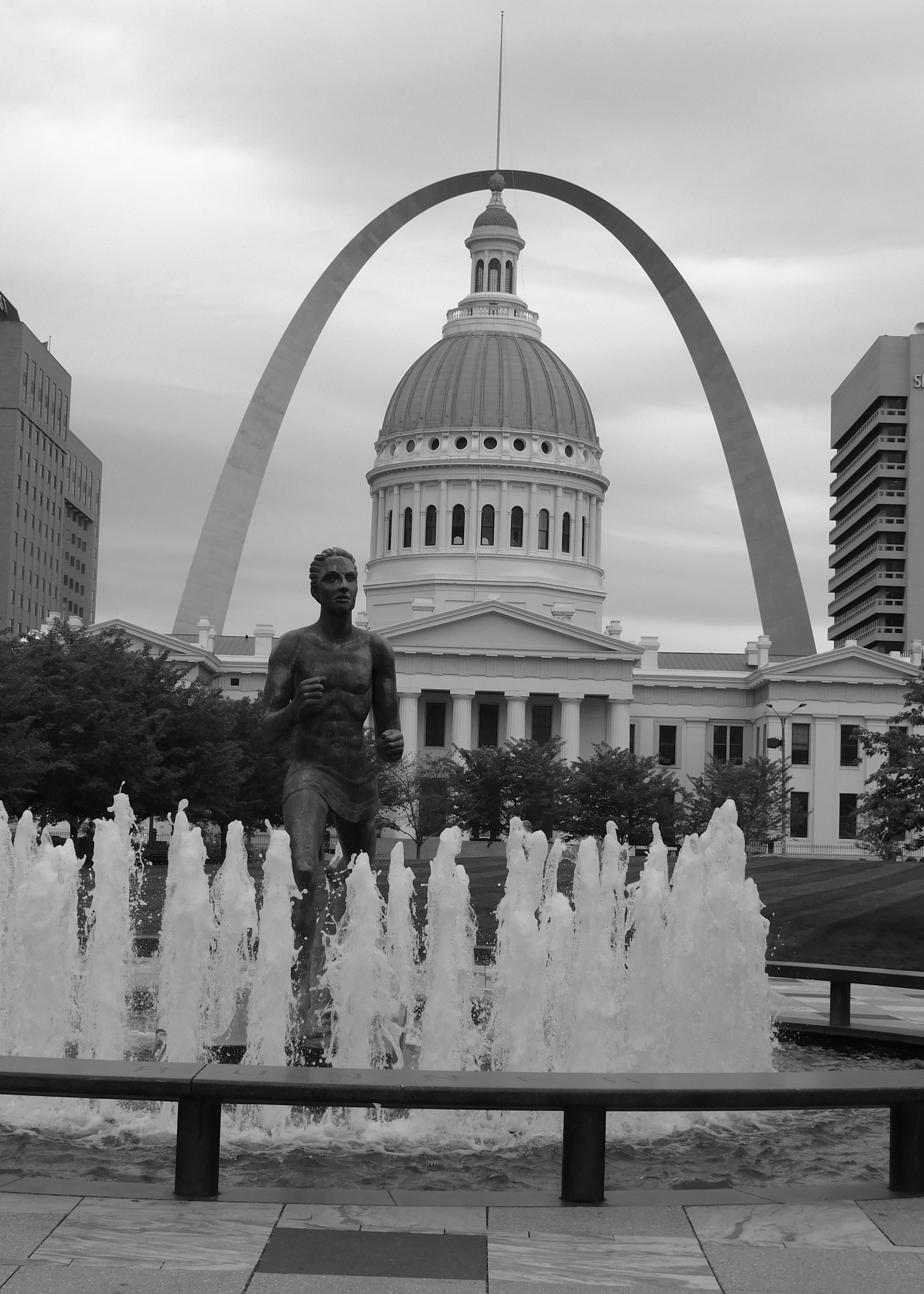
Saint Louis was founded in 1764 by the French and grew from a frontier village to the bustling “Gateway to the West” in time for the western expansion and the popular notion of “Manifest Destiny”. Lewis and Clark presided over the transfer of the town to American control from the Spanish and French just before starting off with the Corps of Discovery in 1804 on their trek to the Pacific Ocean. St. Louis fell under the authority of three flags in one day. The “Old Courthouse” was constructed in 1839 and remodeled somewhat in the 1850s. Its eastern steps served as the site of slave auctions and the Dred Scott court case was first heard here. An old cupula was replaced by the current cast iron and copper dome in 1864. The building is an architectural jewel with an ugly past leading up to the Civil War.

The Illinois side – and a small towboat pushing a coal barge down the Mississippi. Towboats are really pusher boats… go figure.

St. Louis grew up on the Mississippi River just a few miles south of the confluence with the Missouri River. There is still a great deal of river traffic. The granite cobblestone levee was the landing for hundreds of steamboats moored four or five deep and carrying products and people into the American west. Some of my German ancestors arrived by steamboat from New Orleans in the 1840s.

The Eads Bridge is a masterpiece of American bridgebuilding. Construction started in 1867 and it opened in 1876 and was the first bridge across the Mississippi River below the confluence and now is the oldest existing bridge over the river. The bridge carried rail traffic as well as vehicles (horse carriages then automobiles). It was designed to last 1000 years and is still going strong at almost 150 — it is working on it. The 1951 Martin Luther King Bridge is in the background. The 1917 Veterans/MacArthur Bridge is some distance to the south and is decommissioned and partially demolished. The Eades Bridge stands out as a thing of beauty. It is named for its builder, James Buchanan Eads.

The major modern engineering marvel is the Gateway Arch rising 630 feet into the sky on the low bluff above the river. The arch largely occupies the footprint of the original village of St. Louis. On the day I visited there were several Buddhist monks lined up for a ride to the top. The ride is not designed for claustrophobic passengers. The arch is fifty years old already and I can remember when it was topped off with the final “keystone” segment in 1965. The designer-architect, Eero Saarinen, didn’t live to see it completed.
I didn’t go up in the Arch. I have been there. I did pretend to be a new tourist and went places that I have never been even though I was raised in this city. We all have sort of a list of things to see or do in our hometown but never get around to actually doing them because we figure we will do it eventually. Well, I got out my list and checked off a few things. I will just quickly run through some of these spots.
The first one is an exception to what I just said. I almost always make a pilgrimage to the Missouri Botanical Gardens, locally known as “Shaw’s Garden” after Henry Shaw, a one-time English immigrant who got off of one of those riverboats at the landing and made himself a multi-millionaire in the growing city. He was extremely wealthy and had little to spend his money on, so he became a world-class botanist. He created the best botanical garden in the US and perhaps one of the top three in the world. Of course, the place is full of color, but I’m sticking to black and white images.

The mid 19th century botanical library housed Shaw’s collection of notes and reports from research and expeditions sent out to all parts of the world. It still is a center for advanced botanical study and research.

The Climatron was completed in 1960 and renovated in 1988. It was the first fully enclosed, climate controlled, geodesic dome greenhouse. The inside about 50 yards across, contains several lowland tropical ecological zones. You can get momentarily lost in there with the scents and sights of tropical vegetation.
I had never been to the main and largest Anheuser-Busch brewery. Okay, I knew it was big but there are cities that are smaller. I was truly surprised at the scale. This is the original brewery dating back to 1875. The old buildings have been renovated and repurposed over the years and are still part of the main operation. The old sits next to the new.

Back in the day, it was normal to include various touches of artistic architecture or whimsical decorations. The Elephant streetlight is just one example.

I also had never visited the main Roman Catholic Cathedral Basilica in St. Louis. This is the “new” cathedral not to be confused with the “old” cathedral located near the riverfront. I had been to weddings at the old cathedral in years past but never set foot inside the newer one.

This is the Cathedral Basilica of Saint Louis, completed in 1914. It may be new but still over 100 years old. It has a mostly Romanesque exterior design, but the interior is almost entirely Byzantine.

The structure is huge. The St. Mark’s Cathedral in Venice would fit inside of it. You are overwhelmed by the size and the tremendous mosaics covering the interior surfaces.

You really can appreciate the place on a smaller level. I looked for smaller views instead of trying to capture the entire structure.

The Cathedral is located on Lindell Blvd. in an area known as the Central West End. That “trendy” area is not too far from Washington University, St. Louis University, and Forest Park. There are some interesting things to see. At the corner of Euclid and McPherson you will find Left Bank Books, the oldest independent bookstore in St. Louis. It is possibly the literary heartbeat of the city. The street corners honor some of the city’s literary heroes.
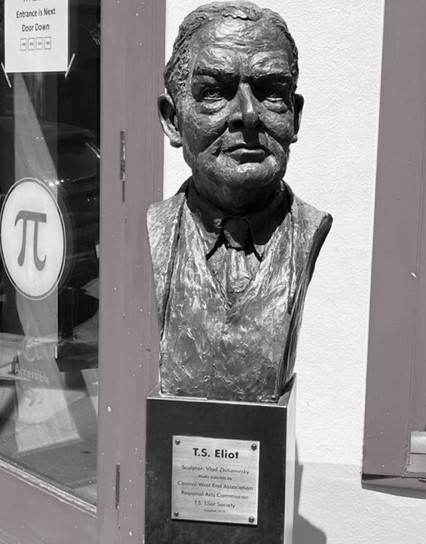
The poet T.S. Elliot was born in St. Louis, not too far from his bronze bust outside the local pizzeria.

“Tennessee” Williams also lived and worked in St. Louis in the general area. My aunt was acquainted with him and helped stage his first plays by a local drama group called “The Mummers”. By her accounts he was a memorable character even then though something of a drama queen.
William S. Burroughs and Kate Chopin are also represented there, suspiciously eyed by “Tennessee” Williams from across the street while Elliot seems to wonder what he is doing in front of a pizza shop.
Also in this general area, closer to St. Louis University, is the International Photography Hall of Fame. I admit that I didn’t know that it was there, but it was a fabulous find. The public exhibit was of photographic images and short profiles of homeless veterans by Jerry Tovo.

Each photo was very moving, and you get some idea of how these people fared while in the military, what their assignment was, and, in some cases, how they ended up homeless and on the street.
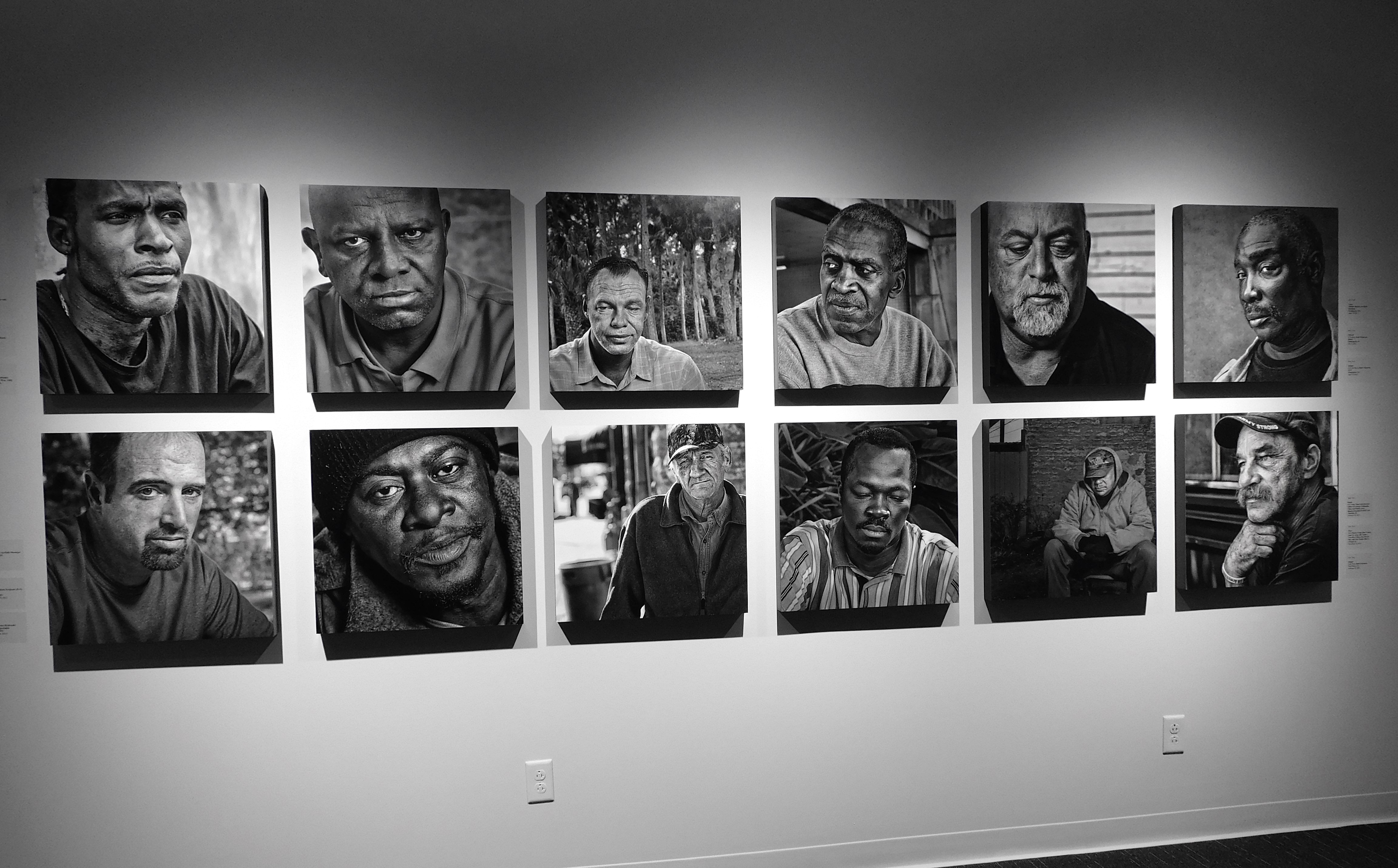
The nephew’s wedding came off without a hitch although the happy couple both had COVID up to a couple days before the ceremony. They intended to get married in hazmat suits if they had to. We started our road trip home the next morning. We were tired of traveling and just followed the interstate home. This interstate route was following Historic Route 66, turning 100 years old in a few years. There were a few obligatory stops along the way.
In western Oklahoma I often visit Lucille’s Roadhouse, an early stopping point along the old highway. It seems to have had a nice makeover since my last visit — new paint and some repairs. Lookin’ good.

There were some old run-down tourist cabins out back that also have been renovated. Such was the state of travel by car in the early 1930s. It is simply a roadside memorial to the old highway, not in business. There is a new Lucille’s a few miles ahead where we stopped to eat some last Midwestern food.
Our next stop was near Amarillo in the Texas panhandle. We found the “Bug Ranch”, a take-off of the more famous “Cadillac Ranch” but made of old rusting Volkswagen “Bugs”.

This is located at the highway exit for Conway, Texas…east of Amarillo.
Close by, on the western side of Amarillo is the world-famous Cadillac Ranch. This is where you might meet a busload of Chinese tourists or some Dutch or German folks on Harleys or some Brits in a rented van. You can smell the spray paint from the highway. Sometimes there is a food truck parked on the side of the road.

The paint is so thickly applied over the years that it tends to melt in the hot Texas summers forming small paint-sicles.
We were happily and safely home the next day.
On reflection, one of the best “new to us” places we found was the Spine Indie Bookstore & Cafe on Arsenal Street next to Benton Park in St. Louis. It only deals in independent published books. They have special readings scheduled and some music performances. The coffee and hot chocolate is great as well as the muffins. If you go, save some time to stroll around Benton Park and look at some of the stately old homes.
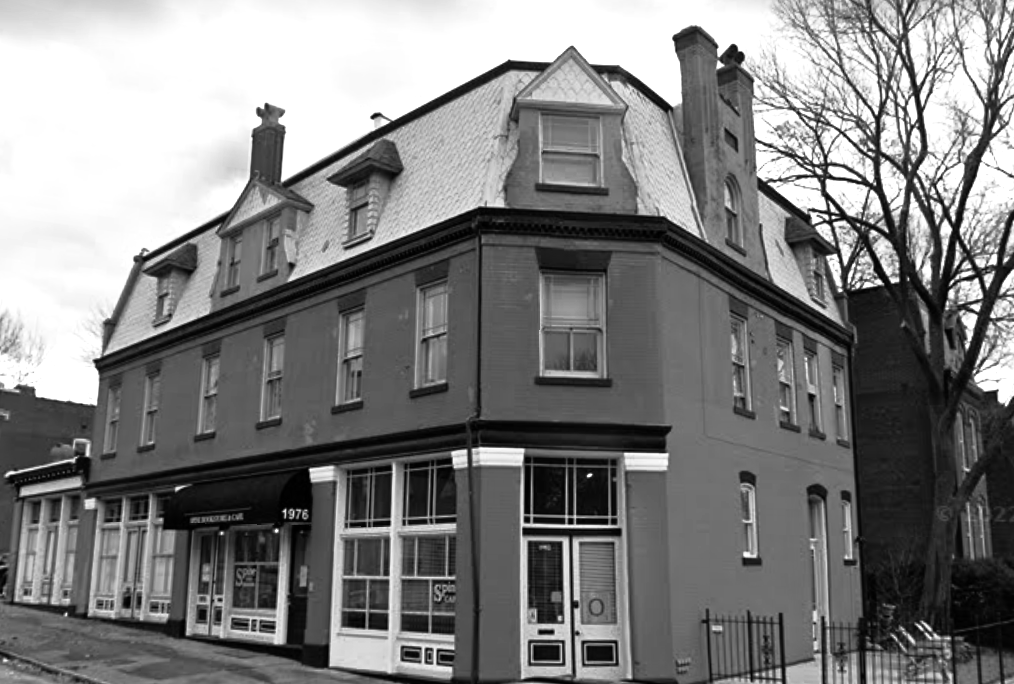
All of the photos are mine except this last one that I borrowed from Google because I forgot to take a picture of the place.
* * *
.
 I have a couple comrades who like to get away into the New Mexico outback — like me — and we have been roaming through the Rio Puerco/Cabezon Peak area, went to a mining ghost town, a few other places in the Jemez Mountains, and in the east mountains. We did this recently before the heat made us suspend our adventures. One is a trained geologist — the paleo kind. He is a profesional photographer with his own business. The other is an avid rock hound and scrounger of any interesting debris. He finds some amazing stuff. I’m a photographer and poet and like to ramble. I have an interest in history and some geology training. Here are a few pictures of what we have been up to these past few months. I enjoy going solo a lot of times but at my age it is good to have someone along.
I have a couple comrades who like to get away into the New Mexico outback — like me — and we have been roaming through the Rio Puerco/Cabezon Peak area, went to a mining ghost town, a few other places in the Jemez Mountains, and in the east mountains. We did this recently before the heat made us suspend our adventures. One is a trained geologist — the paleo kind. He is a profesional photographer with his own business. The other is an avid rock hound and scrounger of any interesting debris. He finds some amazing stuff. I’m a photographer and poet and like to ramble. I have an interest in history and some geology training. Here are a few pictures of what we have been up to these past few months. I enjoy going solo a lot of times but at my age it is good to have someone along.


































